Yes, I do tend to keep things for…ever? You all know about my truck, which I’ve had for 38 years now, but I have another vehicle I’ve had even longer, my Novara road bike. Bought new at REI in about 1980, it was originally a classic 10 speed. I converted it to 18 speeds and made some other upgrades about 30 years ago, part of a major rebuild. I’ve been riding it for fairly short but vigorous local rides since then with typical Niedermeyer-level attention: if it ain’t broke, don’t fix it. But it was now long overdue for a rebuild as well as some further simplification: if it ain’t being used, remove it.
I’ve only ever owned three road bikes in my life, going back to 1961. But there was a consistent theme, set very early on by a formative event. Let me take you back to the beginning, to my first bike ride, as a 4 year-old passenger.
My life on two wheels started in the kiddie seat of my mother’s sturdy Puch bike on the streets of Innsbruck in the 1950s. Before she got married, she and some friends rode their bikes all over the Inn valley and up in the hills of the Alps, sometimes considerable distances and several days’ duration. It was their version of adolescent freedom.
Once she was married and had kids, she hardly ever rode it anymore. But one day she got it out, set me on the back seat and rode through town, to a friend’s tailor shop where she dropped me off while she went an appointment or something. I have vivid memories of that and maybe a couple of other rides likes that, and they inculcated a love of biking.
When I was seven—but quite tall for my age—I got her bike out of the downstairs hall of our apartment building and rolled it out to the sidewalk, determined to ride it. Remembering this just now, I realize this is part of a pattern I have repeated all my life: just jumping into or onto things without training or a teacher. The fact that it was a woman’s bike made that semi-feasible; I remember straddling it standing up, as I had no hope of sitting on the seat, and mostly just coasting down the sidewalk, standing on the pedals. Maybe I was pedaling it too? Whee!
Later that summer of 1960 we moved to Iowa City, to a very kid-rich neighborhood where all the kids had bikes. My older sister and brother both got used bikes, the typical heavy single-speed cruisers of the time. This shot of our house shows my sister and her bike, my brother’s bike, my mom and my younger brother, and our ’54 Ford.
Here’s a shot of our front yard and all kids with their bikes. I’m in the lower left corner, pondering how I can finagle that kid’s bike in the driveway.
I was desperate to ride too, and somehow I ended up with someone’s little-used or outgrown 20″ Schwinn kids bike on an informal long-term loan. Or did I just borrow it and never return it? It was a perfect bike to learn on, and I quickly became the terror of Holt Avenue. And there was the big city park just a block away, with the Iowa River at its edge. A world to explore on my own.
In the US at the time (early ’60s) big, heavy single speed Schwinns and such were utterly ubiquitous for kids’ bikes back then, and for grownups too, although not many rode bikes by then.
Actually, given that it was a university town, some did, and it was almost invariably a British 3-speed; most often a Raleigh or such.
One day as I was pedaling furiously on Park Avenue a guy came flying past me on a 10-speed “racer”, tucked down over those turned-down handlebars. It looked so sleek, stripped down, light, and most importantly, fast. I saw him again on occasion, and my desire for a speedy bike swelled. I’d been aware of racing bikes from magazines and such, but seeing that one zipping down the road ahead of me left one of those deep and indelible childhood impressions.
After a year I was getting too big for that 20″ kids bike, so my parents relented and we went to to Novotny’s Bike Shop, pretty much the only one in town then. He was the Schwinn dealer as well as for some European brands.
The regular adult frame 26″ wheel bikes were still too big for me, but I spotted a red 26″ (wheel) British Dunelt with a downward curved top frame member, exactly like this Canadian-Tire branded one. I was only in third grade, so I could just barely get up on the seat, never mind put my feet down at a stop without getting off the seat. But it was the closest thing to an English “racer”, so it had to be it. No heavy, fat Schwinns for me!
In my quest for simplicity and speed, I soon stripped it of everything unnecessary, which wasn’t much—the fenders and chain guard. I turned the handlebars down so that I could get into a nice tucked position to maximize my speed, useful when some bullies from my class were chasing me on the way home from school on bikes (I was not popular, a common problem with immigrants). Even though one kid one had a fancy 5-speed Schwinn, I could stay well ahead of him. I credit these formative events for my tendency to still ride fast, if not very long. Are they gaining on me?
Unknown to me, I was essentially recreating the racing bikes of the classic single speed era.
I rode that Dunelt to school and all over Iowa City, especially to visit all the car dealerships and hang out downtown on Saturdays. It was wonderful; what a great sense of freedom for a kid only 9, 10, 11 or 12 years old. Iowa City was my oyster.
We moved to Towson, MD in the end of summer of 1965, and on the first day of school I rode my bike up to the local Catholic parish school. The kids all stared at me as if I’d just landed from Mars—absolutely no one rode bikes there. In the usual desperate seventh-grade need to try to fit in this very conservative, preppy crowd, I immediately ditched the Dunelt in the corner of the shed and started walking everywhere, or hitchhiking, depending. The miles I put on my Bass Weejuns must have been exceptional; no wonder they needed resoling annually (or more).
The transition from a freewheeling university town to a conservative preppy city was painful for me, and a week after I turned 18, I put on my Boy Scout backpack and headed west again, back to Iowa City by hitchhiking. That was in the depths of winter, but when summer came round, I was eager to get back on a bike.
One day I was walking downtown past a new little bike shop that had opened recently. Out front was an immensely tall, dark blue 10 speed, with a sign that said “$25 Off”. My Novara here above; it has a 26″ frame (66cm), measured by the length of the main vertical frame member, from the center of the crank to the top where the seat post goes in. That’s unusually tall. But this bike I was looking at had a 27¼” (69cm) frame! I’ve never seen one that tall again, and that’s why its price was reduced. It needed a very tall buyer—hence the price reduction—which thanks to my 6’4″ frame was me.
It had an unfamiliar name on its badge—Vainqueur, a Belgian brand that made bikes in the classic French style. I have not found anything similar to it on the web except this badge from a later version. It was a basic 10-speed, comparable to a Peugeot or such, equipped with a Simplex rear derailleur, Weinman brakes, and a cottered crank, which I came to dislike. But it was beautiful, fast and it fit me just fine.
I rode it fast all over town and out into the Iowa countryside, although red-winged black birds that pecked at one’s head and farm dogs that ran out in attack mode were minor inconveniences. I had a dream to ride it out to and into the Rockies, thanks to a movie I had seen as a kid by two guys who rode their 10-speeds to and all through Yellowstone.

They were hardly the first.
It’s one of the regrets of my life. How hard would it have been, to just lash on my pack and sleeping bag and head west on US highway 6, like Charles Corwin White, bicycling from Los Angeles to New York in 1948 on his European derailleur bike and speaking along the way on “Americanism” and the citizenry’s participation in a democracy. I can be a wuss!
The next year, I decided I wanted a motorcycle. On the first slightly warm spring morning in 1972, I looked in the paper and saw a Bridgestone 90 for sale. I went to the seller’s house, gave him the money, and helped him push it up the steep stairs from the cellar where it had hibernated for the long Iowa winter. He showed me how the gears worked, I started it up, got on it and just…drove away. That was my initiation into the world of motorcycles, just like I had pushed my mom’s bike out on the sidewalk to teach myself how to ride.
This post is about bicycles, so I’ll leave the Bridgestone here as well as the subsequent Yamaha 305 Big Bear for another time, but obviously my bicycle got used quite a bit less that summer. I’d hop on that little Bridgestone, sometimes with a girl on back, and ride off to all kinds of places, even on highways. (it topped out at about 60, which felt like 90). And then in the fall of 1972 my brother gifted my a 1963 Corvair Monza, so I sold the Bridgestone. But even with that and two subsequent VW Beetles, the Vainqueur still got plenty of use, and got strapped on top of the roof rack of the beetle whenever I moved in those years, which was often.
In 1976 I moved to Southern California. When I got a job at the little tv station in West LA in 1977, I rented a garage apartment about five miles east of that, at Stephanie’s mother’s house—which is how we met. I had my ’68 Dodge A100 van then, but in order to save gas money I often rode my Vainqueur down very crowded six-lane Century Boulevard, mixing it up with the cars, which I often passed due to the congestion. I can still smell the exhaust of all those cars as well as the sting of the smog.
Then we got married, and Stephanie didn’t like riding a bike; she has a perceptual issue that makes her uncomfortable riding one. And then the kids came along, and the Vainqueur moldered away in the garage until a friend mentioned that their brother really needed a bike. Since he was also tall, I gave it to him and off he rode.
But within a year or two, after we had moved to Santa Monica, the itch came back, and I finally scratched it in about 1980 or so, at the REI store. It too was tall and dark blue, a house-brand Novara, made in Japan in the typical style of the 1980s. I attached a rear kiddie seat and took turns riding with one of my kids up through Pacific Palisades and into some fire roads in the Santa Monica Mountains. It was highly unsuitable for those rough gravel and dirt roads, both the gearing and the skinny tires. Shoulda’ bought a mountain bike (like the one in this picture), which were just becoming popular at the time. But we made it somehow.
After we moved to Los Gatos in 1987, I used to imagine riding my bike to work, along the Los Gatos Creek Trail for part of the way. But the lack of a shower at work and a few other details kept that from happening. Probably mostly just inertia. Except for the occasional Saturday morning brisk ride, the Novara mostly sat…until we moved to Eugene in 1993. Suddenly I was in bicycling heaven, and had the time to indulge it.
I’d just head out and ride off into the countryside, or even further, and Stephanie and the kids might pick me up with the van somewhere and then hike. But I was frustrated with the gearing on the bike, and when I did a bit of reading on bikes, I realized why: the two front chainrings were very close together in the number of teeth, and one was supposed to split-shift, front and rear, in order to actually make use of the full 10 speeds. Come on; how many were going to do that, other than racers? So I went down to a non-profit community bike shop that also had lots of parts for cheap and decided to rebuild it and improve it.
I lucked into a Tourney crank set with 180 mm long cranks, which are fairly rare and unusually long. I had read that a taller rider benefits from longer cranks, but apparently more recent studies debunk that. But it suits my cadence, which is not very fast. I put on triple cranks, a 42 tooth gear in the center, a 52 on the outside and a super-low 24 granny gear on the inside. And I swapped out the 5-gear rear freewheel for a 6-speed one: 18 gears in all.
That really low gear was useful when I used to have my disabled daughter hooked on behind on a trailer-bike. She claimed that she was pedaling, but it was air-pedaling at best. We used to ride up and over a long hill; on the way up I was doing the heavy lifting, but on the way down her extra weight without any additional aerodynamic resistance made us fly. The speedometer said 42 mph once; that was a bit scary.
But after 30 years, it was way past time for a proper rebuild and to make some changes.
So in addition to completely disassembling the whole bike (even the pedals) and cleaning and regreasing all the ball bearings, I also ditched the two other front chainwheels and of course the front derailleur.
Now I’m just down to the 42 tooth front gear, which suits my use pattern perfectly. Yes, i still use old-school pedals; I had toe clips for a while but in town they’re a bit obnoxious. And I just never got clip-on shoes and pedals.
I had become very frustrated with the rear derailleur, a Suntour I bought new 30 years ago with the change in rear gears.
The issue was that it would often pop out of gear, forcing me to tighten the friction on the Campagnolo friction shifter way more than ideal, making the whole shifting process increasingly frustrating. I had picked this shifter up at that same community shop that had gobs of used parts. The original were mounted up on the handlebar stem, a fad for a while on low-end 10 speeds, along with the brake lever extenders. Both got ditched during that first rebuild.
I was thinking of getting a modern index shifter, which would also have required a new dished rear wheel and other changes.
But after I took apart the rear derailleur, whose little chain wheels were totally gunked up with 30 years’ of dirt and gunk, and installed new cables, the shifter is now a total joy! I’d forgotten how nice a friction shifter can be. Just a gently nudge on the lever, and snick…snick…snick…
I picked up these used Shimano side pull brakes for $10 at the community bike shop, and they are so much nicer and stronger too. And I’m training myself to use the front brakes more; I had been under the impression that was not ideal and could lead to tip-over, but that’s not realistic, and the rear brake is much less effective due to weight transfer during braking.
I’ve changed almost everything on this bike over the decades except the frame and wheels and handlebars. The frame is a keeper, made from chrome-molly steel Tange tubing from Japan during their golden era of bike making. Steel frames give a better ride than the overly-stiff aluminum and carbon fiber frames, even if they are lighter.
Where would I ever find such a tall frame again? They just don’t make them this tall anymore, unless by a custom frame builder. I don’t really worry so much about it getting stolen, as most folks couldn’t get up on it.
This is the turnaround point for my brisk (hopefully) daily morning ride, out past the west end of town in the wetlands. We’re only a few blocks from the bike path so no traffic the whole way. And there’s another that runs along both banks of the Willamette River, as well as others nearby.
I said “only my third road bike ever”, but Stephanie and I also share a tandem. It’s a Burley, one of their last ones they made, still in Eugene, before they sort of dissolved and just turned to having their trailers made in China.
We bought it some 20 years ago, and often rode it with my daughter’s trailer bike attached (and her dog in the basket), to ride her back to her group home in Springfield across the river. Piloting that combine rig was a bit like driving a semi truck. A bit challenging in traffic and such, but a great ride once under way.
Stephanie loves the tandem, as it relieves her of dealing with a certain perceptual issue on a regular bike. And she doesn’t mind going fast. And yes, tandems are fast; two pedaling but with only the air resistance of one.
Sometimes we’ll haul it in Ol’ Yeller to the Row River bike path near Cottage grove, which was a former logging railroad line, the one where Buster Keaton’s “The General” was filmed. It’s a wonderful ride past a reservoir and up into a valley.
That’s story of my life on two wheels, so far. Well, actually there was a brief time with a mountain bike, but this has gotten way too long already.
One of these times I’ll have to do a post on my life on one wheel. I still have it, out in the shed. Wonder if I can still do it? Hmm…stay tuned.




































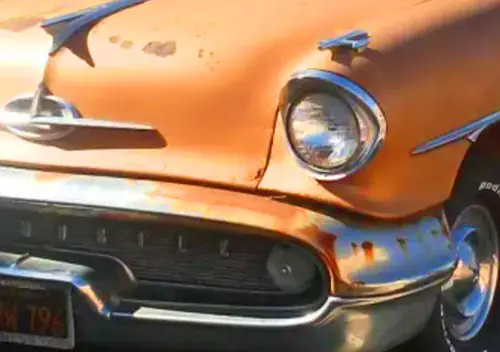
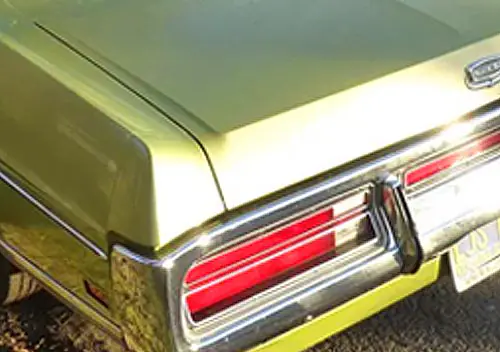
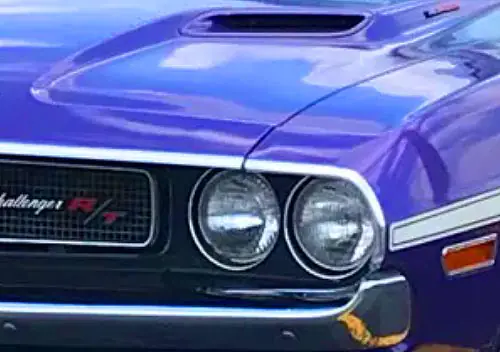


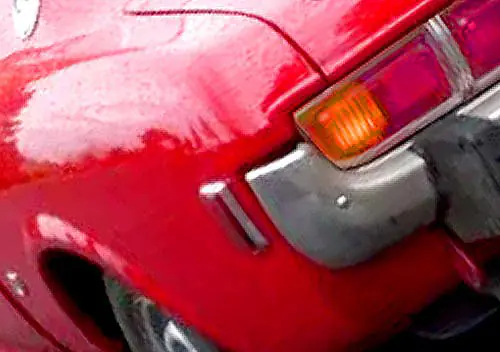

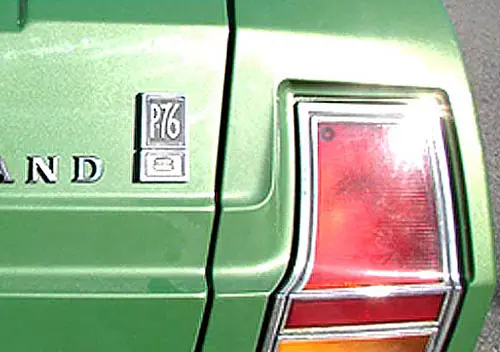
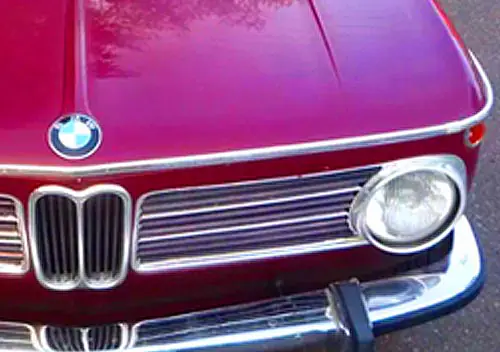

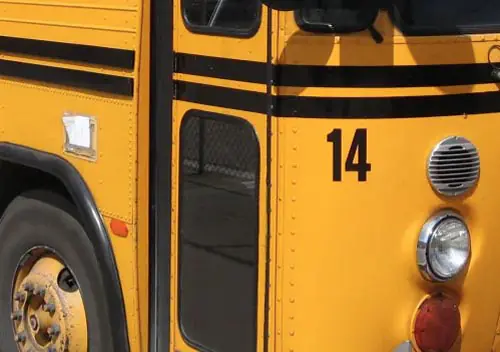
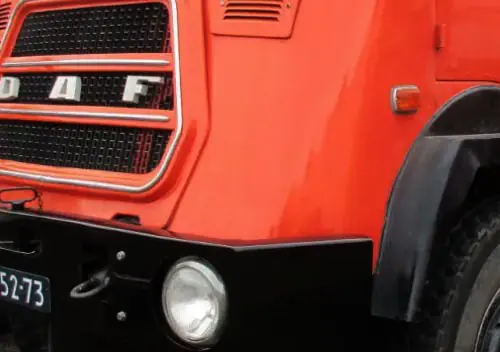
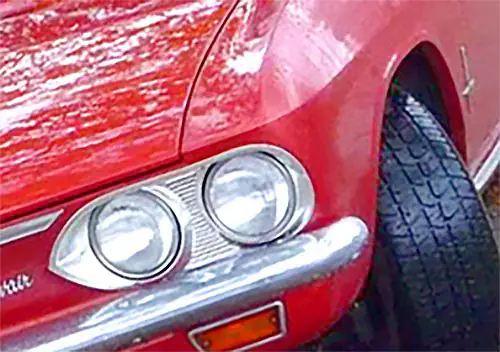
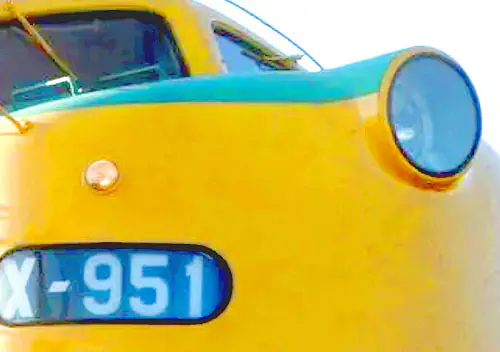
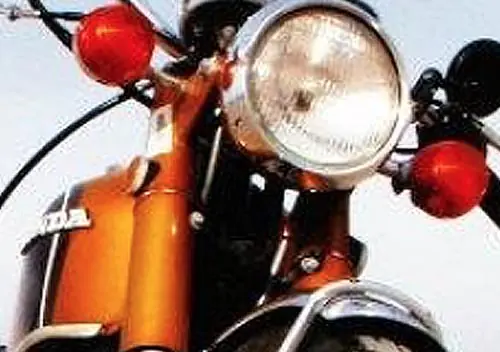
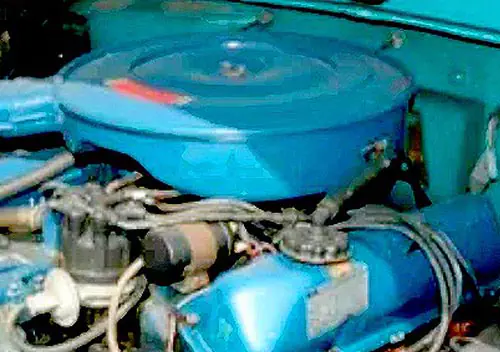
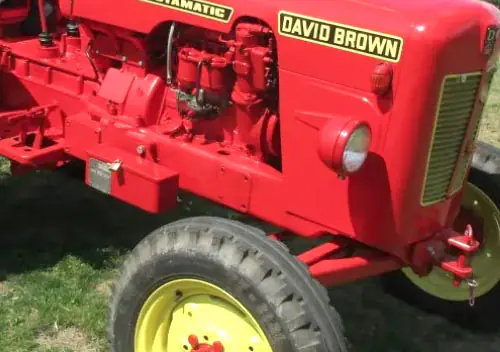
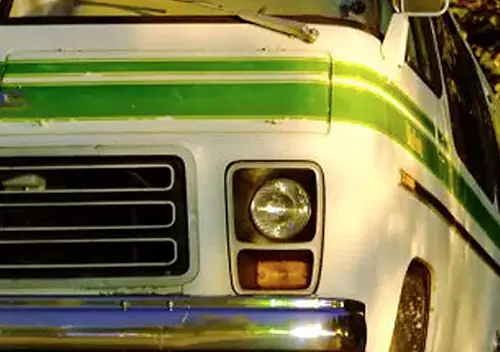

Wonderful article and images!
The lady on the bike with the child on the back seat is Queen Juliana with Princess Marijke (NL, 1952). Quite the royal ride!
I knew parts of this story but it’s fun to read the timeline including the early days on your mom’s bike in Austria. And I’d heard about the Bridgestone, but not the Big Bear. More please!
My two wheeled trajectory has been a bit different, and while I have owned at least two high-end steel-framed bikes and belonged to the “steel is real” club for a long time, my experience is that a good modern carbon frame provides a stiff but supple ride. Modern design and multi-directional layup techniques for the layers of carbon and epoxy can allow variations of strength, stiffness and flexibility, and damping in different directions. Something steel tubing or even aluminum extrusions and forming just can’t do. My mid-range Trek and my new Specialized have a soft but controlled ride over potholes, but the power down when pedaling hard. My previous steel Ritchey with Tange (Japanese) steel tubing seemed good in the Nineties when I bought it but nothing like the new “plastic” bikes.
Both of our kids are riding my wife’s and my 1980’s steel bikes, despite owning other more modern bikes, so they do have lasting function and style. And appeal.
Beautiful bike.
Congratulations, Paul. Besides being sporty, cycling is also good for your health. It’s always good to do it on the weekends.
I come from a bicycle family (on my mothers side). My Grandfather had a bicycle act for USO Camp Shows in WW2 and Korea. So even at this ripe old age I have 5 mountain bikes and 2 Peugeot road bikes. I only use the Peugeot’s to display with my Peugeot cars.
Paul, I share your love of riding around Iowa City as boys, and of Novotny’s Schwinn shop, though we missed each other by a half-dozen years. Thanks for writing this; it brought back fond memories of MY youthful biking adventures.
That’s a nice simple yet functional bike! At 6ft (and shrinking) I’d have to have that seat all the way down, and even then…? I used to bike everywhere around Towson as a kid , especially to Ginos and all the York Rd car dealers, and loved being on 2 wheels. But then my Suzuki 120 B100P (aka “Bloop”) when I was 18 and never looked back, and at least 20 m/cs since, still have 3. Meantime a ’90s Nishiki hybrid sits unused in the shed, this post is inspiring to get it out and on the road again, my knees need the workout! Great bike post Paul!
I know you’re a few years older than me, because things must have changed very rapidly by 1965 when we arrived in Towson. Nary a bike to be seen. Maybe the younger kids still rode in their neighborhoods. A whole pack of us 7th and 8th graders used to go to Gino’s everyday after school (Immaculate Conception) but nobody rode a bike.
I think I’m a bit younger, my first bicycle was from the Toys’R’Us on Route 40 in Catonsville MD, probably about 1963…we moved out of Catonsville to Burlington VT in 1965 and I rode it until 1967.
Second bike was bought at Sears on Shelburne Rd…a 3 speed “racer” that was made in Austria, with a Sturmey-Archer like handlebar shifter and Weinmann side-pull brakes…a 3 speed planetary hub. Despite living in Vermont where the winters are long, I put lots of miles on it between home and school and lots of other trips like to Ft. Ticonderoga. My Sister likewise got a Sears Spaceliner, which I ended up with (it hangs from rafters in my garage, doesn’t get used sadly) designed by Viktor Schreckengost a noted industrial designer of the last century.
We then moved to Virginia, I traded my “racer” on an entry level Gitane, it had center pull brakes and Simplex prestige derailleurs and cottered crank. Had that until after grad school, when I bought a Mercier with Suntour derailleur and side pull brakes. But I got in an accident with the Mercier (car turned left in front of me into my path; couldn’t stop, tumbled over hood and broke 2 ribs, backbone, and collarbone). The tubing is now part of a recumbent bicycle my friend/co-worker made…he used to volunteer as part of a human powered vehicle team and made some of the huge crankwheels they use on them, and now retired volunteers in a bike shop in Colorado.
I shouldn’t have bothered, but I bought a Performance road bike as a replacement….got cold feet after that accident, and have hardly rode in the last 32 years since. Maybe I should have bought a mountain bike instead, but I live in a large southern city, where drivers aren’t too bike friendly (they’ve started to emulate Eugene though putting in discontinuous bicycle lanes), but I’m the type who “roasts” in the heat if I’m not going fast enough to get air cooled, and even then despite applying wax to the frame, have deteriorated the frame due to perspiration dropping around the lugs. Probably should just donate the bike now as it hasn’t been ridden in many years now.
Though I’ve always been interested in cars, I think bicycles got me into working on them…since I was used to working on bicycles first. Bikes are pretty simple but there are things like respoking wheels that you don’t have to do on (most) cars. My Dad seldom did any work on his own cars (too busy with his job) so most of my working on cars was just kind of like plunging in and figuring out what I did wrong…sometimes it took me quite awhile to get past conceptual misunderstanding where I had the wrong idea in my head (like changing the clutch on my ’86 GTi, I probably did it fine the first time, but for some reason I didn’t quite get, I ended up removing and reinstalling the transaxle multiple times where I didn’t have to…but I didn’t realize it till later.
I see you included a photo of Major Taylor, who had an interesting story in his own right.
https://en.wikipedia.org/wiki/Major_Taylor
Paul – I approve of the conversion to six speeds. 18 is good for a road racer. Six is fine for a casual but frequent adult rider. One fewer derailleur (also on my bad list in addition to cottered cranks), one fewer shifter + cable and two fewer cranks is good.
My rides are steel framed with “mustache” handlebars for more vertical riding. I have seven or eight speed Shimano internally geared hubs so zero derailleurs. Did 14 miles this morning and that is my average ride.
I’ve never been to Iowa City but have ridden Cedar Rapids about five times in the last ten years.
A lovely Saturday morning read about one of my favourite topics. For a good bit of my life I regarded automobiles as only existing to enable me to get my bikes places.
I still have 2 steel bikes. One with friction shifters. I sometimes still appreciate them when tuning a finicky 1×10. Rode a lot of miles on simplex component Peugeots back in the day.
And it’s impressive how long the old Novara has lasted
Here’s a picture of me on the day I got my first bicycle, in June 1963. My dad has always been very safety conscious, and did not allow me to get a 2-wheeler until I was 10 years old, which frustrated me to no end. Behind me is the family home, no. 39, which should be familiar to many of you by now.
If I don’t look particularly thrilled with my brand new ride, it’s because I was physically ill with excitement that day, throwing up multiple times!
Some parallels with Paul’s story:
– I tend to keep my bikes for a long time, but cannot resist the temptation of upgrading to a shiny new one eventually. Next was a Raleigh 3-speed, then a Peugeot 10-speed, and most recently a Giant OCR-2 27-speed in 2004.
– I prefer a larger frame than my 5’6″ height would normally dictate. Along with setting the seat quite high, this allows me to fully extend my legs on the down stroke, even though it makes it more difficult to mount and dismount. I also set the handle bars as low as possible, which I find reduces the strain on my back. The longer crank also works to my advantage.
– Although my current bike is a 27-speed, I essentially use it as a 9-speed. Ninety-nine percent of the time, I only use the outside, largest front gear. My legs have always been quite strong, but I get winded very quickly if I pedal too fast. I still surprise cyclists half my age, passing them going up hills that force them to dismount. Unlike Paul, I have not removed the inner gears and front derailleur.
Sadly, I’ve had to suspend my cycling activities since March 2024, when I was diagnosed with a bicuspid aortic valve, a congenital birth defect of the heart. The cardiologist was surprised at this late diagnostic (I’m 72), since this defect usually causes problems much earlier. He was even more astonished to learn that I was still able to ride 50+ km non-stop as recently as October 2023.
I’m scheduled for open heart surgery later this month, and the surgeon assured me I will be able to get back on my bike three months after surgery.
Sixty years of cycling has probably contributed greatly to my general health and well-being, and I look forward to many more years of cycling.
That bike looks just like my Dunelt, with that curved down top frame.
I wish you a speedy recovery from surgery, and many more years of cycling to come.
Great article Paul!
I have been on 2 wheels since I was about 4 years old and still love getting out on some gnarl on my MTB.
Like you, I tend to keep things I like for a long time – here is something that connects my love of 2 and 4 wheels – a Porsche FS from 1999 that I have had since new.
The Porsche bikes were made by Votec, a very high end brand based near Stuttgart and the geometry was defined by Porsche Engineering, where some very enthusiastic mountainbikers worked. The FS weighed only 11.6kg, which was very light for a fully at that time and it still rides really well today, with none of the “pogoing” which afflicted many of the early full suspension bikes.
The FS alloy frame had some really nice CnC milled parts and it still gets looks today if I take it to the bike park. In the US I have a modern 29er Canadian Rocky Mountain trail bike. It’s fascinating to see how geometry has changed in 20-odd years – much, much slacker fork angles for stability, but steeper downtubes to aid climbing.
Sorry but I am the ‘vainqueur’ of the largest frame: here my pink 70cm (BB to top of the top tube) Marinoni, fabriqué au Qc …bien sur . I know it’s not fair because it’s a custom frame.
It was the time when 400mm seat posts did not exist, hence the 70cm seat tube for my 99cm inseam. So few extra large frames are available ,even more so today with all these sloping top tubes. One of the only modern ‘mass produce’ large frame is the Khs Flite 747 XXXL,even there a “64” is in reality only a 61cm .Little older: Miyata real 66cm from the 90s .I suspect your Novara frame was outsourced ??? to Koga-Miyata ? . Tagaki crank & Tourney equipped and still today all my bikes in their 180mm dimension of course.
Yes, presumably you have vanquished me. Although I do wonder if my Vainqueur was actually 70cm, and the bike shop did a poor job in their conversion to inches? Or maybe I forgot that it was actually 27.5″? 70 cm somehow seems more likely than 69. It certainly looks to be the same size, FWIW.
Growing up in the 70s a bike was essential. Parents could not simply be summoned for rides. I wanted a 10 speed so badly, I finally got a Takara. Only ice and snow kept me home.
Great article that should connect with many readers, as most of us have had a longer life on 2 wheels than our time with 4 wheels.
And yes, I want to hear about your single wheel times.
My first bike was a Sears Free Spirit coaster bike. It was heavy and nearly indestructible. And decidedly un-cool. Even as I was just learning how to ride it, I was surrounded by kids with the then-popular (and now highly collectible) banana-seat Stingray bikes. I felt like such a looser with my straight handle bars while EVERYONE else had those ape-hanger handle bars. The COOLEST kids had one of those Mattel V-rroom “boosters”. Which were all show and no go (same kids probably later added hood scoops on their Firebirds). Oh well.
From there, I fell directly into a crowd that rode fancy French and Japanese 10-speeds. They were all hunched over for speed, on skinny tires, and shifting gears, while I trundled on with the Free Spirit…which I have to say was a far superior bike for delivering newspapers upon than any fancy pants racing bike. 😉
Here’s a picture of the Mattel V-rroom device, for those who might have missed that particular part of the Wonder Years. There was also a version that was just the T-handle that was similar to that found on the Stingray bikes. It did nothing but make noise. I can’t find a picture of that.
And just to capitalize a bit on my early bike looser-dom, I’ll note that my parents insisted on making sure that my little sister got a girl’s version of my Free Spirit coaster at EXACTLY the same time as I got my bike. Thereby insuring that anyone who knew me also knew that my sister had a bike that was exactly like mine. Oh, the humiliation…
Paul, lovely read and nice to see bicycle coverage here at CC. I’m inspired to take a ride.Before legal driving age, they were an escape as well and they sparked my mechanical curiosity. They are such a pure mode of transport. My first road bike was three speed Ross Eurotour in blue metallic with reflective thin white walls. I wanted a 10 speed Schwinn but Dad said no – to fast and expensive. Like you, I tossed aside the chain guard and fenders -much to his dismay and I replaced the curved bars for ramhorns, flipped up to mimic an airplane yoke. Next big boy bike was a Kabuki SSK 10 speed I purchased in college. Heavy as heck, but fast. To many crazy drivers and the off road style of riding put me onto mountain bikes 32 years ago. After heavily modifying a new Raleigh Mount Rainier and selling it, I bought a new Cannondale SuperV 29 years ago that I still ride and love. Bikes on trail now are so different — but the motor on mine hasn’t changed (only aged a little) nor have the trails.
Deja vue. My first bike was a red 26″ Schwinn Typhoon like your photos. Had front & rear baskets which I used to deliver newspapers. I crashed it and eventually got a heavier bike better suited for the weight of my newspapers.
Similar to your experience, bicycles weren’t cool in high school. Our Rambler American was probably even less cool than a bicycle – but at least it was a car.
I got my 1st proper road bike – a Japanese Miyata – the Army. The Miyata and I are on the right of the photo. Part of our amateur Army team is with me at some long forgotten Korean rest area.
Leading up to the ’88 Seoul Olympics, we noticed a group of Korean athletes training for the Olympics had a regular road session leaving from near our base. They always had a police escort, so when we didn’t have duty, we’d time rides to fall in behind their pace line.
We were far from Olympic class athletes. Eventually the Korean team would drop us some miles from our base. We were then on our own to get back.
To this day I’m amazed I don’t have Kia or Hyundai embossed on my chest.
The Miyata frame got bent on a move back to the States. I replaced my road bike with an aluminum frame Trek 710.
I still ride that bike. Perhaps one of the last US-made Treks, I consider it a classic. I do miss the better ride of my steel frame Miyata though.
That brings back some memories, my first bike was a 20″ wheel Columbia, that led to my first notable crash. We lived on a steep street, and one day I went too fast, and still have the scar on my elbow. Around 1975 I made the leap to a 10 speed, in my case a Raleigh Record. Then in 1980, when you bought a Novara, I go an Austro-Daimler, Puch’s premium line. Mine was a low spec model with Huret friction shifting and Weinmann side pull brakes, that got a lot of use including a bike tour along the Middle Atlantic but I stopped riding much after I got a car.
We got back into cycling around 2000 with mountain bikes, a Burley trailer and eventually a trail-a-bike. We did a lot of family rides since we were right near a longish trail in Beaverton. We also eventually got back into road cycling and did a Seattle to Portland and some shorter rides. We also had a tandem for a while. The ultimate rig was Portlander Joe “Metal Cowboy” Kurmaski who rode a tandem with a trail-a-bike and a kid trailer across part of Canada.
Regarding crank length Lennard Zinn, the well known writer and frame builder does both https://zinncycles.com/custom-cranks/ Zinn is even taller than Paul Niedermeyer and has specialized in extreme sizes for decades. Personally I’m not that tall so standard 172.5 road cranks work fine, as does a 36-46 cyclocross crank, which is low geared enough to climb anything I’m willing to go up.
With my inseam of nearly a meter, according to Zinn, I should use a crank with a 200 mm arms .This is what -IRD cranks- I have already used on my fat bike in winter, This suited well the nature of a fat-bike i.e. crawling at low speed with plenty of torque provided by the extra leverage. Also, no toe overlap and plenty of ground clearance on a Fat-bike . I wouldn’t recommend longer cranks ( longer than 180mm ) on a non-custom racing bike where the geometry isn’t designed for .That’s why Zinn also offers custom frames with higher BBs and longer ‘front-center’ dimension .
Growing up in the ’60s my Dad was into British bikes. When he was in college in the early ’50s he had a side hustle fixing and dealing bikes. He even figured out how to convert a Sturmey-Archer 4-speed hub into a 5-speed years before Raleigh marketed the exact same design. My parents had a matching pair of Phillips custom 5-speed bikes. So my first bike at 5 years old was a Phillips 1-speed with skinny 20″ tires and a rod brake for the front wheel. When I was 10 I got a 26″ wheel Raleigh with a factory 5-speed. Both bikes were purchased from Wolf Cycle on Lancaster Ave in West Philly. Both still reside in my garage.
I really enjoyed this post, as I recently modified my ’76 Schwinn Superior with an upright handlebar/direct connect stem/quill stem converter, and dual pivot side pull brakes so I can ride it while accommodating my elderly body. Such a smooth ride, although the frame is a bit heavier than average for a steel road bike. Love the Flamboyant Red color like the Typhoon above.
I loved the steel road bikes, too, but I couldn’t resist the call of the Stingray. That lasted about 2 years before I’d had enough of being left behind.
Portland hosts the handmade bicycle show MADE in August.
I have to say that my 21 year old Trek carbon road bike has a comfortable ride as well.
Many more happy miles on the Novarra. It’s always a delight to see a vintage steel road bike out being enjoyed.
Very cool article! Big cyclist here, I have 8 or 9 bikes currently. I try to have one of every genre for the type of riding I’m doing. The 29er got some use today out on the Iowa gravel roads.
I had a green Schwinn Typhoon that was used to deliver newspapers for over 5 years. I did all of the repair work until I couldnt figure out why the chain kept falling off the rear sprocket, the local shop diagnosed it as all the teeth on that sprocket where bent they looked like ocean waves. Later got a Schwinn Continental 10 speed that I kept many decades.
What an evocative history.
I had quite a few bikes, all very pre-owned, and essentially, junk we kept patched up till it couldn’t be. Can’t recall a single make, except for Malvern Star, which was THE locally-made brand.
I’ve not ridden a bike in years. Given my age now, that’s probably sensible, as I have long had the ability to fall off – even bikes that’re already lying down. Crashed a lot when I was a kid, including one doozy at about nine which tore one side of my face open down to the flesh. Nasty, long recovery. But I continued to ride, and ride absolutely everywhere. Outer suburbs, bordering on a hilly national park, there many risks to be taken, and we missed none. I look back with a shudder.
The (forgive me) slightly comical-looking two-storey bike of storied history here is, I swear, the one I learned to ride on. Well, probably not, but at six or thereabouts, the gigantic, ancient Malvern Star of my brothers sure looked that high. As a long-legged individual, I did eventually get the knack, though the Barely-Reached riding position was hardly safe, and the number of times I gave the old grapes a crushing on that infernal cross-bar it’s a wonder I still have them attached. Talk about black and blue – half the time, they looked ready to make a good Cab sav.
I’ve lived inner suburbs for years now, and all the wealthy private school turdmunchers in their BMW x3#Xi Alphanumeric Whatevers make the roads far too dangerous for a bike. There are lovely bike trails just nearby, but alas, they’re infested with Righteous Lycra bros whose extreme fitness has priority over any other user and rendering the sweet river paths about as safe as a stroll on an autobahn.
I’ve never seen such a tall bike, that sure look unusual.
Where we live one has to immediately ride up a hill no matter what direction and that really kills my enthusiasm.
For my bum knee I use a stroke shortener on one side of the crank. It has an additional pivot so both sides have the same low point of the swing circle:
https://t-cycle.com/en-ca/products/easy-knees-pedal-swing-and-crank-shortener-kit
My 1991 Specialized Hard Rock mountain bike has gotten a lot of use since I retired 5+ years ago and the covid lockdowns began. It has a chromoly steel frame,18 speeds, no suspension (it was purchased right on the cusp of when suspensions were introduced), and “antler” type handlebars. It’s proved to be very rugged. I ride mostly on pavement now with street tires, racking up over 19,000 miles in those 5 years.
I’m obsessed with my bike and always looking for an excuse to ride it. Single gear with super skinny tyres. I live in a relatively flat part of town and I noticed I never left a certain gear when riding a 10 speed years ago. I can’t remember the ratio but I bought the bike second hand and had the rear hub gear replaced to my sweet spot.
City riding definitely has its hazards and I tend to ride the backstreets during the day, and empty mainstreets during summer nights. I’m also feeling the effects of age; my peripheral vision feels a bit diminished so l’m extra vigilant on that matter.
I like exploring places on Google maps, and it looks like flippers got a hold of your old house in Iowa City, Paul.
Black and white now with a three (3!) car garage bigger than the house itself.
Can’t go home again, they say!
Nice story.
True that! Yes, I noticed that a little while back myself, when I first found these photos.